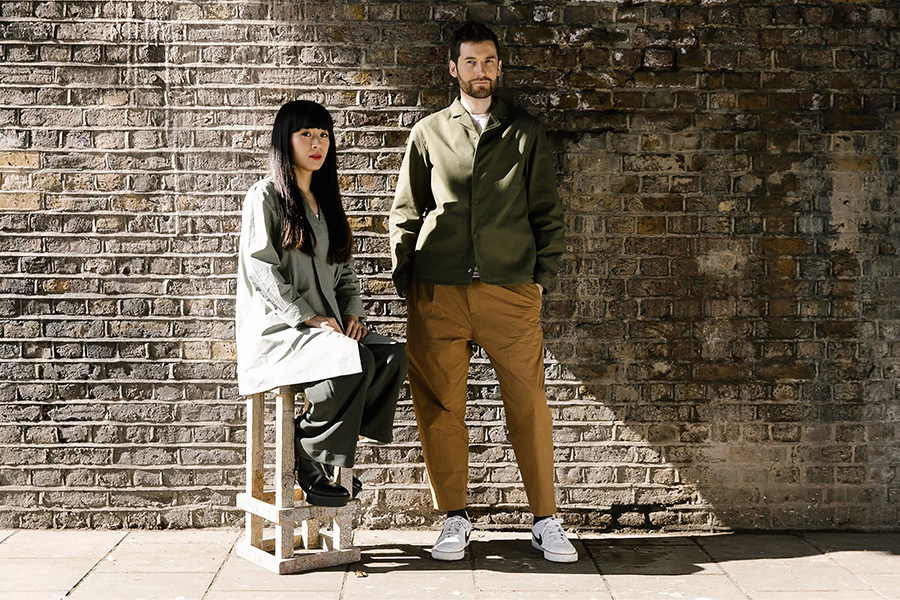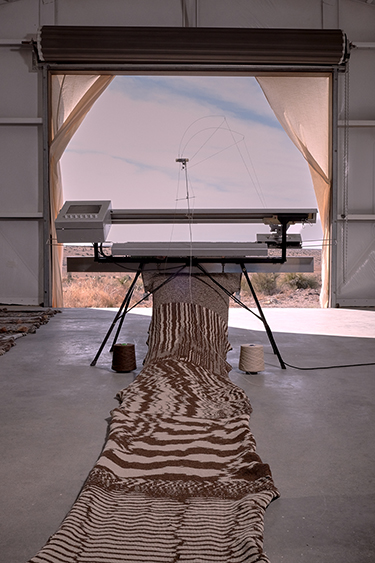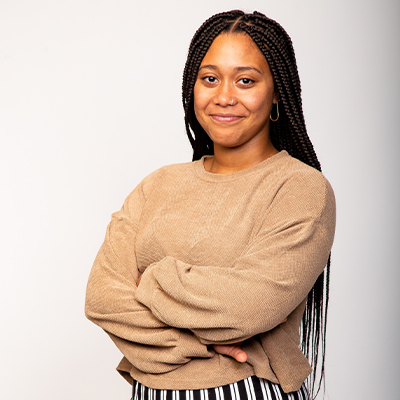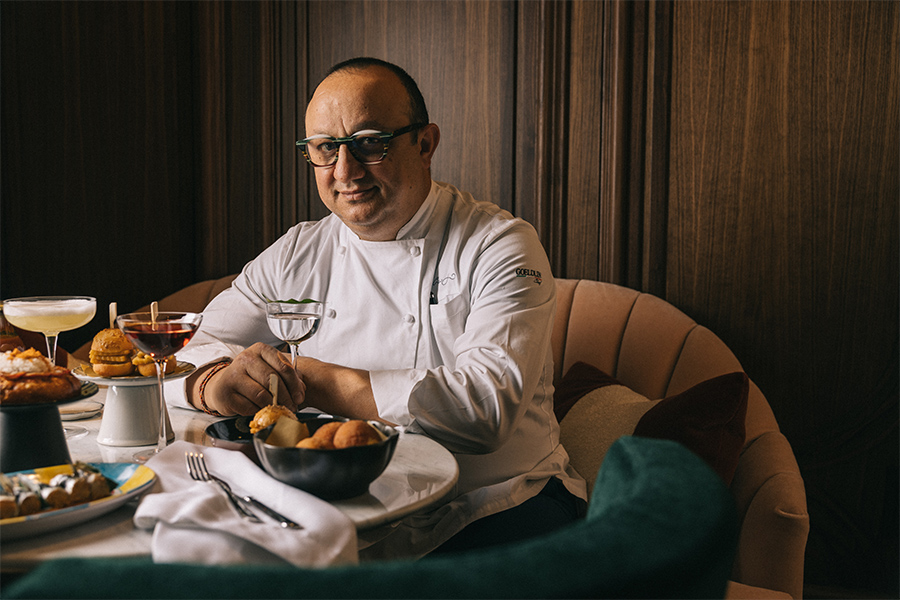Digital platform Art Blocks will host its fifth annual Art Blocks Marfa Weekend this October in Texas. For the generative festival’s 2024 edition, international studio and gallery Trame presented a lineup of four multidisciplinary artists using algorithmic technology to create standout pieces.
A.A. Murakami

The duo known as A.A. Murakami first met as architecture students in London, where they shared a passion for experimentation. In the years since, their collaboration has yielded artistic explorations of materials so ephemeral—think bubbles and fog—that it’s a provocation to categorize them as materials at all.

A.A. Murakami’s A Thousand Layers of Stomach takes inspiration from Asari clams
Debuting at Art Blocks last year, A Thousand Layers of Stomach engages more tangible elements, composing a wool tapestry woven in perpetuity through automation technology. Inspiration was drawn from Asari clams, whose distinctive patterns echoed an algorithmic uniformity A.A. Murakami cofounder Alexander Groves hoped to transform into a textile. “They had a look that reminded me of weaving,” he says.
Groves and his partner Azusa Murakami drafted mathematical formulas to mirror the patterns through generative code. They also sourced a 1980s knitting machine, which was deconstructed and rebuilt with a panel of dials inviting users to add human variations into the stream. “Whenever you try and mimic nature, I find it deeply humbling because the sophistication of even the simplest thing is so vastly superior to anything we’ve created in terms of what it can do on such a scale,” Groves adds. “You look at something as simple as a clamshell, but you think about the sophistication of life.”
Fingacode
 The Cameroonian-British artist dubbed Fingacode bridges backgrounds in art and software engineering to guide a practice of both function and fun. Distinguished by a range of color, texture, and depth, his pieces inject humanity into the sturdy perfections of code. For the work he showcased at Art Blocks, Fingacode imbued imperfections into his code by applying height mapping to his color palette, resulting in an undulating landscape of artful disorder. “Algorithmic decisions can’t make errors. I wanted to break out of that grid and have a human touch,” Fingacode says. “I wanted it to be created by a machine but still feel human.”
The Cameroonian-British artist dubbed Fingacode bridges backgrounds in art and software engineering to guide a practice of both function and fun. Distinguished by a range of color, texture, and depth, his pieces inject humanity into the sturdy perfections of code. For the work he showcased at Art Blocks, Fingacode imbued imperfections into his code by applying height mapping to his color palette, resulting in an undulating landscape of artful disorder. “Algorithmic decisions can’t make errors. I wanted to break out of that grid and have a human touch,” Fingacode says. “I wanted it to be created by a machine but still feel human.”
He continues to explore identity in his textiles as well as the fashion concepts he drafts, but his technological prowess is not one he believes separates him from other artists. “My generative projects are essentially sketches. I’ll start off with a simple for loop [a repeat of a block of code]—something to get an idea on the screen. Then it evolves over time,” he says. “I’ve skipped the manual process and gone straight into the technological.”
Linda Dounia
 Senegalese-Lebanese artist Linda Dounia embraces a wide range of media from pastels to video. But when she intersects craft and technology something truly groundbreaking emerges. “I received a comment early on that some of my work, especially work that either used code or an AI model, had a textile quality,” points out Dounia, who currently resides in Dakar, Senegal.
Senegalese-Lebanese artist Linda Dounia embraces a wide range of media from pastels to video. But when she intersects craft and technology something truly groundbreaking emerges. “I received a comment early on that some of my work, especially work that either used code or an AI model, had a textile quality,” points out Dounia, who currently resides in Dakar, Senegal.
Dounia’s childhood home in Mbour, Senegal inspired a new rug design presented at Art Blocks. “Whenever I think about my hometown, I think about the buildings,” she says. “I wanted to play into code strength, which is the ability to create forms that are structural and mathematical.” Even the code she created to achieve her new design evokes an architectural quality in its very composition. “Once you go from code to threads, organic shapes sort of force themselves onto the design,” she says. “If you look at it in this digital form, it’s so mathematical, so angular. Then once it gets turned into a rug, it softens.”
Machine-tufted and refined by hand, Dounia’s exploration of textile brings a welcome sense of collaboration to a practice often characterized by solitude. “Code shares a lot with textile, but it was amazing to see it through the artisan lens,” she adds. “They understood it in such an analogous way that felt very validating.”
This article appears in HD’s April 2025 issue.


